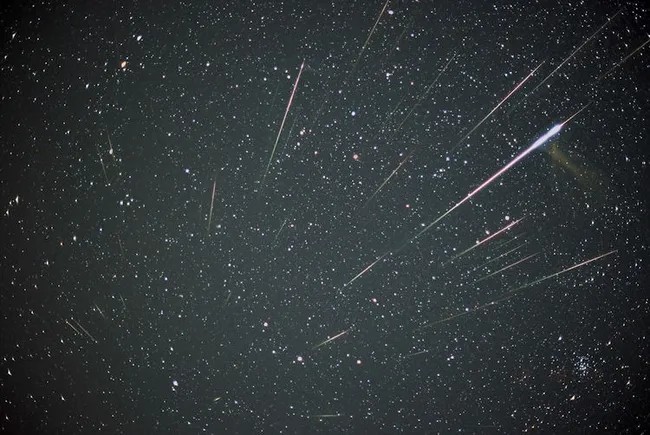
Leonid meteor shower

18.11.2023
Leonid meteor shower , Daily Current Affairs , RACE IAS : Best IAS Coaching in Lucknow
|
For Prelims: About Leonid Meteor Shower, Key Features of Leonid,Search |
Why in the news?
Many skywatchers in India and across the world are gearing up for the Leonid meteor shower, which is already underway since November 6, is projected to reach its peak in the pre-dawn hours of November 17-18, 2023.
Important points:
- During this peak, observers can expect to see about 15-20 meteors per hour throughout the night.
- Observing the Leonid meteor shower requires an open terrace and an apparently cloudless dark sky.
- The Leonids are considered one of the fastest meteors, falling into the Earth's atmosphere at a staggering speed of 70 kilometers per second.
About Leonid Meteor Shower:
- The Leonid meteor shower peaks each year in November.
- It reportedly originated from the remains of comet 55P/Tempel-Tuttle, which completes its orbit around the Sun every 33 years.
- These meteors are renowned for their remarkable brightness, with some even displaying vibrant colors. What sets them apart is their extraordinary speed, flying through space at an astonishing rate of about 44 miles per second.
- When the comet passes near the Sun, it heats up and releases a ton of material, creating a dense cloud of dust and gas around it.
- This cloud follows the comet's circle and remains out of the fan for a long time.
- Each year, Earth crosses the Tempel–Tuttle orbit in mid-November and, in some cases, experiences the comet's dust cloud.
- When this happens, dust particles enter the Earth's atmosphere at high speed (about 70 km/s) and catch fire, creating bright streaks of light in the sky.
- We see these as meteorites, the Leonid meteor shower.
Key Features of Leonid:
- Leonid is known for producing some of the most stunning meteor displays in the history of astronomy.
- Leonid is known to occasionally produce meteor storms, as characterized by greater fluxes of meteors.
Search :
- An astronomical wanderer that was first identified by Ernst Tempel in 1865 and independently rediscovered by Horace Tuttle in 1866.
This year's edition of the Leonid meteor shower began on November 3 and is expected to continue until December 2.